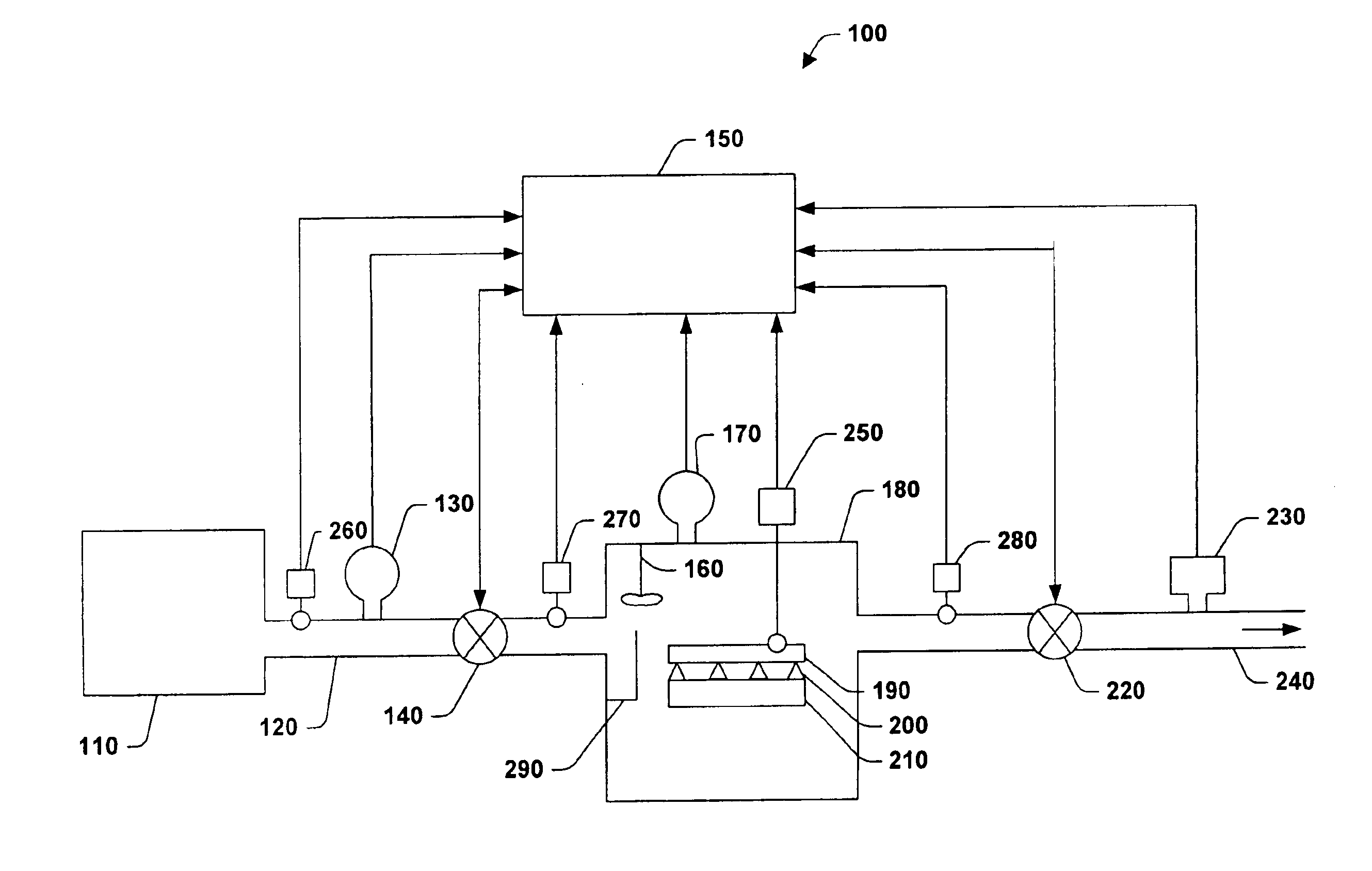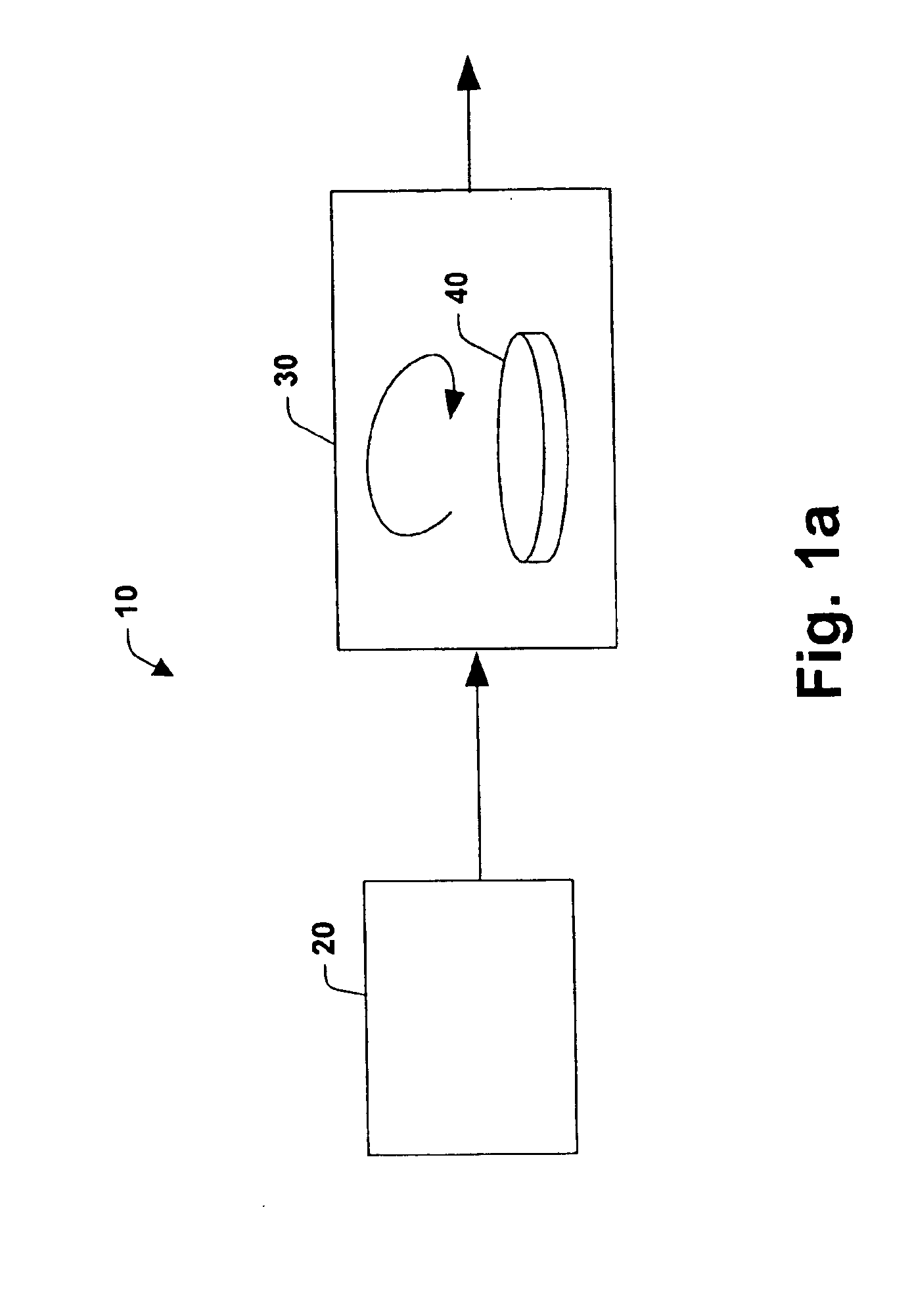System for rapidly and uniformly cooling resist
a technology of uniform cooling and resist, applied in the field of semiconductor processing, can solve the problems of reducing the ability to create sharp contrast between exposed and unexposed regions, affecting the attack rate of resists by developers, and under-baked resists showing inadequate differentiation between the dissolution rate of exposed and un-exposed regions
- Summary
- Abstract
- Description
- Claims
- Application Information
AI Technical Summary
Benefits of technology
Problems solved by technology
Method used
Image
Examples
Embodiment Construction
[0023]The present invention will now be described with reference to the drawings, wherein like reference numerals are used to refer to like elements throughout.
[0024]FIG. 1a is a general schematic of a cooling system 10 in accordance with the present invention. Cooling system 10 includes a first sub-system 20 in which a fluid is cooled through the Joule-Thompson effect and a second sub-system 30 in which the cooled fluid is contacted with one or more coated semiconductor substrates 40.
[0025]FIG. 1b is a schematic of a cooling system 100 in accordance with the present invention. System 100 includes high pressure reservoir 110, inlet valve 140, chamber 180, outlet valve 220, and controller 150. In accordance with a method of the present invention, one or more coated substrates 190 are cooled by venting fluid from high pressure reservoir 110 into chamber 180, which contains substrates 190. Fluid is vented into chamber 180 through inlet valve 140 and released through outlet valve 220 to...
PUM
 Login to View More
Login to View More Abstract
Description
Claims
Application Information
 Login to View More
Login to View More - R&D
- Intellectual Property
- Life Sciences
- Materials
- Tech Scout
- Unparalleled Data Quality
- Higher Quality Content
- 60% Fewer Hallucinations
Browse by: Latest US Patents, China's latest patents, Technical Efficacy Thesaurus, Application Domain, Technology Topic, Popular Technical Reports.
© 2025 PatSnap. All rights reserved.Legal|Privacy policy|Modern Slavery Act Transparency Statement|Sitemap|About US| Contact US: help@patsnap.com



